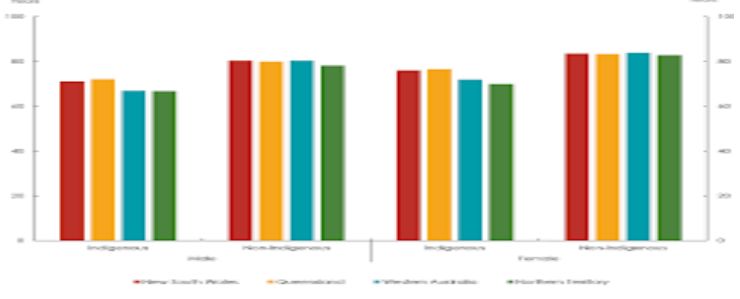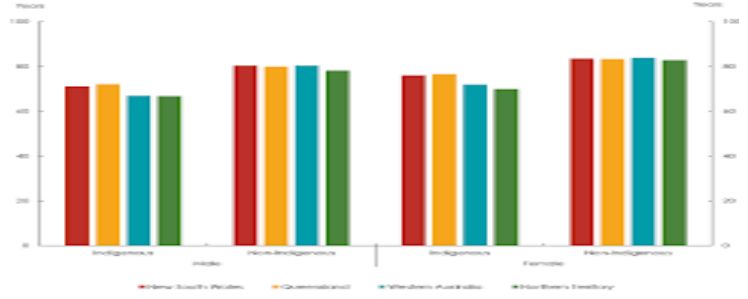Lifespan Nutrition Assessment NUTR2005
- Subject Code :
NUTR2005
- Country :
Australia
Activities:
Activity 1: Childhood obesity (approx. 200 words)
Watch the following video by Margaret Chan, director-general of WHO on childhood obesity. Chan, M. (2014). WHO on child obesity and nutrition. Retrieved from https://youtu.be/eF7Uhi4mBmA
Based on the video and what you have learnt thus far, create a reflective summary on childhood obesity, its statistics worldwide and in Australia, some of the underlying causes and suggestions to mitigate this upward trend. Refer to current research and government statistics in your summary.
Activity 2: Nutrition in Adulthood (approx. 300 words)

Rose is a 52 year old female presenting to your clinic with hypertension. Her current blood pressure is 140/90. Her GP agreed to her trying dietary and lifestyle changes for 3 months prior to deciding on medication. Rose is generally in good health, however recently she has been having trouble sleeping due to night sweats. Anthropometrical measurements:
Height: 173cm.
Weight: 76kg.
Waist circumference: 89cm
Hips: 100cm
Current diet:
Breakfast: 2 pieces of toast with salted butter and jam. 2 cups of tea with milk and 1 sugar Morning tea: cup of tea and 2 slices of lemon cake
Lunch: Corned beef sandwich (3 slices) with 2 slices of tomato and 1 slice of cheese, 2 slices of white bread
Afternoon tea: date slice & 60g chilli salted peanuts
Dinner: 2 x Lamb chop, cup of peas, cup of carrots and 1 small potato (with added salt and 1 knob of butter)
2 glasses of red wine
100g milk chocolate
Case study Questions:
- Blood pressure: Rose's blood pressure is 140/90 mmHg, which is considered high blood pressure or hypertension. Her chance of developing cardiovascular problems and other health issues is increased by this.
Weight and BMI: Rose weighs 76 kg and is 173 cm tall. Her Body Mass Index (BMI) is determined by dividing her weight (kg) by her height (m). In Rose's situation, her BMI is about 25.4, which is considered to be overweight. A risk factor for hypertension and other associated medical disorders is being overweight.
Rose's waist circumference is 89 cm, which is better than average because it is less than the threshold for central obesity (which is larger than 88 cm in females). But it should also be taken into account together with other things, like BMI and general health.
Hip-to-Waist Ratio: Rose's hip-to-waist ratio, which is determined by dividing her hip and waist measurements, is around 1.12. This ratio indicates that she may be carrying extra weight in her midsection, which might be a factor in her hypertension and metabolic problems. - An examination of Rose's present diet:
The present diet of Rose seems to be heavy in sodium (added salt), bad fats (such saturated fat from butter and lamb chops), processed carbs, and added sweets. Additionally, there is a lack of diversity in the diet, and it may not be getting enough fibre, vitamins, or minerals(Chepulis et al., 2018). - Dietary Approaches to Stop Hypertension (DASH) Diet: The DASH diet places a strong emphasis on fruits, vegetables, whole grains, lean meats, and low-fat dairy. It has been demonstrated to decrease blood pressure and is low in saturated fats and salt. Reduced Sodium consumption: Lowering sodium consumption to 1,500 mg per day, rather than the recommended 2,300 mg, will help control hypertension.
Blood pressure can be lowered by achieving and maintaining a healthy weight with a balanced diet and frequent exercise.
Exercise: Regular physical activity, such as aerobics and weightlifting, can help decrease blood pressure. - Rose's current diet is compared to the suggestions:
Rose's current diet diverges greatly from the DASH diet, which is advised for the control of hypertension. Her diet contains excessive amounts of sodium (added salt), bad fats (butter and lamb chops), and added sweets (cake and chocolate), all of which can exacerbate hypertension. Another issue with her diet is the absence of whole grains, fruits, and vegetables. Rose should concentrate on implementing a DASH-style eating plan, lowering her salt intake, and generally making healthier food choices in order to enhance her health and control her hypertension (Kennedy, 2018).
Activity 3: Nutrition and ageing (approx. 300 words)
Introduction: Good day/evening, prestigious age care nurses. Today, I'll talk about how important it is for seniors to consume enough protein to maintain good ageing and fend against numerous illnesses. Knowing the importance of protein in the elderly's diet may significantly improve their health. As healthcare practitioners, you are well aware of the complexity of health and illness in the old.
The elderly must consume enough protein since it is essential for immunological support, muscle preservation, and the maintenance and repair of bodily tissues. Ingesting enough protein helps lower the incidence of falls and fractures in senior people and prevent the age-related muscle loss condition known as sarcopenia. Consuming enough protein can also maintain good skin, speed up the healing of wounds, and possibly even help with the management of chronic diseases like diabetes and hypertension. Additionally, diets high in protein can increase satiety, which helps with weight control and guards against malnutrition (Coker et al., 2017).
Protein Recommendations from Australia for Elderly People: The current Australian guidelines state that those over 65 should strive to consume 1-1.2 grammes of protein per kilogramme of body weight per day. These suggestions do have some restrictions, though, because it is important to take individual differences, health conditions, and exercise levels into account.
Recent studies back up the recommendations for older people to consume more protein, particularly to prevent sarcopenia. This is known as the scientific evidence on protein consumption in the elderly. Studies have revealed that older persons may benefit more from protein consumption above the suggested amounts for muscle protein synthesis and general muscle health. This shows that not all older people may have their protein needs completely met by the existing standards (Pauk et al., 2020).
Change in RDI for the Elderly: The elderly's reduced ability to utilise dietary protein as a result of age-related muscle loss and anabolic resistance has resulted in a change in the Recommended Dietary Intake (RDI) for protein. Higher protein intakes are necessary to maintain muscle mass and function in order to counteract these alterations (Ouyang et al., 2022).
Diet with Enough Protein for Seniors: Planning your meals in a balanced way will help you consume a diet high in protein. For instance:
Breakfast: Greek yogurt with mixed berries and almonds.
Lunch: Grilled chicken salad with mixed greens, chickpeas, and avocado.
Dinner: Baked salmon with steamed vegetables and quinoa.
Impact of High Activity Levels on Protein Needs: An aged person's protein requirements may rise if they are very active and regularly engage in exercise or resistance training. Exercise increases the production and repair of muscle proteins, requiring more protein to enable muscle recovery and adaptation (Hodson et al., 2020).
Activity 4: Nutrition in non-communicable disease (approx. 250 words)

Jim is a 54-year-old male in a high stress, sedentary occupation. He weighs 120 kg and is 181cm tall. His waist measurement is 130cm and hips 125cm. When he was younger, Jim used to be active by regularly swimming and playing sport. His high stress sedentary job that requires long hours (sometimes 12-hour days) have prevented him from exercising as he used to. To manage stress, Jim started smoking 8 years ago. Jim feel anxious all the time and admits he has poor sleep habits, going to bed at 11pm most nights. He smokes 10 cigarettes per day. Jim has slightly elevated blood pressure (135/90). Jim currently does little or no exercise.
His 24-hour diet recall is as follows:

Case study Questions:
- Based on the provided information, Jim's current health status appears to be concerning, with several risk factors for non-communicable diseases (NCDs). Anthropometrical Measurements:
Weight: 120 kg
Height: 181 cm
Waist: 130 cm
Hips, 125 cm Due to his weight and waist size, Jim is clearly overweight and most likely has extra abdominal fat, which is linked to a higher risk of developing a number of NCDs. Jim's diet lacks important nutrients and is abundant in harmful foods like processed and high-calorie meals. He consumes a lot of processed meals, such as chips and chocolate brownies, as well as sugary beverages (Coke, sugared coffee), unhealthy fats (bacon, butter), and bacon. An eating pattern like this can increase the risk of cardiovascular disease, type 2 diabetes, hypertension, and obesity (ZHAO, 2020).
Lifestyle and Physical Activity: Jim has a sedentary lifestyle, which, when coupled with a lack of physical activity, raises his risk of obesity and associated health problems. Due to his extended work hours, his prior active lifestyle has been replaced with inactivity. Jim has been a smoker for eight years in an effort to reduce stress. Numerous NCDs, such as lung cancer, chronic obstructive pulmonary disease (COPD), cardiovascular disorders, and stroke, are significantly increased by smoking (Corlateanu et al., 2018). Sleep Habits: Jim has a bad sleep schedule and typically goes to bed around 11 p.m. Chronic sleep deprivation can have a detrimental effect on general health, increase stress, and worsen mental health problems.
Jim drinks a lot of alcoholsix beers, to be exactand quite a bit of it. Cardiovascular disorders, liver illnesses, and other health complications can result from excessive alcohol intake (Damjanovska et al., 2023). - Jim is at risk of developing the following non-communicable illnesses as a result of these factors: Cardiovascular Diseases (CVDs): Jim's chance of acquiring CVDs, such as heart attacks, strokes, and hypertension, is increased by smoking, a poor diet, a sedentary lifestyle, and excess weight (Guo et al., 2021).
His diet, which is heavy in calories and sugar, together with his inactivity and weight, enhance his chances of acquiring type 2 diabetes.
Jim's likelihood of developing chronic obstructive pulmonary disease (COPD), a lung condition that can substantially affect breathing, increases if he smokes.
Certain Cancers: Smoking raises the chance of developing lung cancer, and other cancers can also be exacerbated by a combination of poor nutrition, obesity, and inactivity.
Stress, irregular sleeping patterns, and smoking can all have a bad impact on Jim's mental health and increase his risk of developing anxiety and other mental health issues.
It is imperative for Jim to undertake major lifestyle adjustments if he wants to enhance his health and lower his chance of developing these non-communicable illnesses. These include of giving up smoking, changing to a healthy diet that includes more fruits, vegetables, and whole grains, exercising frequently, dealing with stress in a healthier way, and consuming alcohol in moderation. Developing a customised health plan for Jim's unique needs can also be aided by consulting medical experts for guidance and assistance (Eysenck, 2018).
Activity 5: Nutrition in special needs groups (approx. 200 words)

Compare life expectancy and chronic disease statistics of Indigenous Australians to non-Indigenous Australians. You can present your information in tables or graphs. Identify two nutritional components that contribute to these statistics and summarize them briefly. Ensure that you are utilising the latest Australian statistics and referencing your resources correctly.
Comparison of life expectancy and chronic disease statistics of Indigenous Australians to non-Indigenous Australians:
Table comparing the chronic illness and life expectancy rates of Indigenous and Non-Indigenous Australians


As you can see, compared to non-Indigenous Australians, Indigenous Australians have a much shorter life expectancy and a greater frequency of chronic illnesses. These data are influenced by a variety of factors, such as:
Nutritional aspects: Indigenous Australians are more likely to be overweight or obese and consume less of certain vitamins and minerals such calcium, iron, and vitamin D.
Socioeconomic factors: Indigenous Australians are less likely to have access to high-quality healthcare and are more likely to live in poverty.
Indigenous Australians are more likely to be exposed to environmental poisons like lead and mercury due to a number of environmental conditions.
Chronic conditions including heart disease, stroke, diabetes, and cancer can all be caused by these variables. graph comparing the life expectancy of Native Australians vs non-Native Australians
Are you struggling to keep up with the demands of your academic journey? Don't worry, we've got your back! Exam Question Bank is your trusted partner in achieving academic excellence for all kind of technical and non-technical subjects.
Our comprehensive range of academic services is designed to cater to students at every level. Whether you're a high school student, a college undergraduate, or pursuing advanced studies, we have the expertise and resources to support you.
To connect with expert and ask your query click here Exam Question Bank

